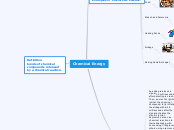da Victoria Tang mancano 2 anni
148
Chemistry 11 unit 2 - Chemical Reaction
Chemical reactions can be categorized into distinct types: single displacement, decomposition, double displacement, combustion, and synthesis. Understanding these reactions involves recognizing patterns in how reactants transform into products.









